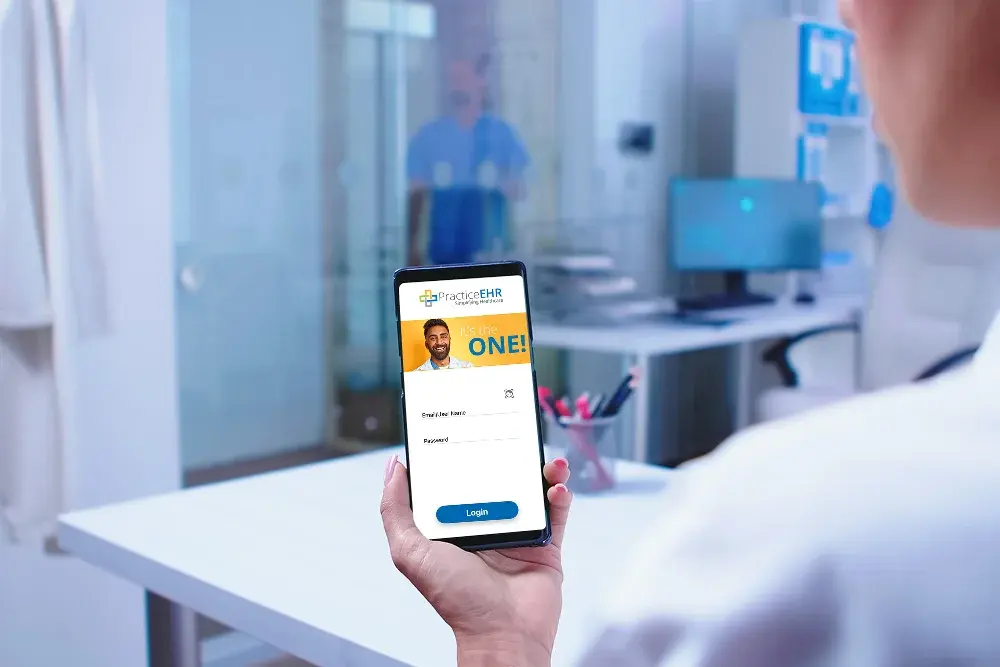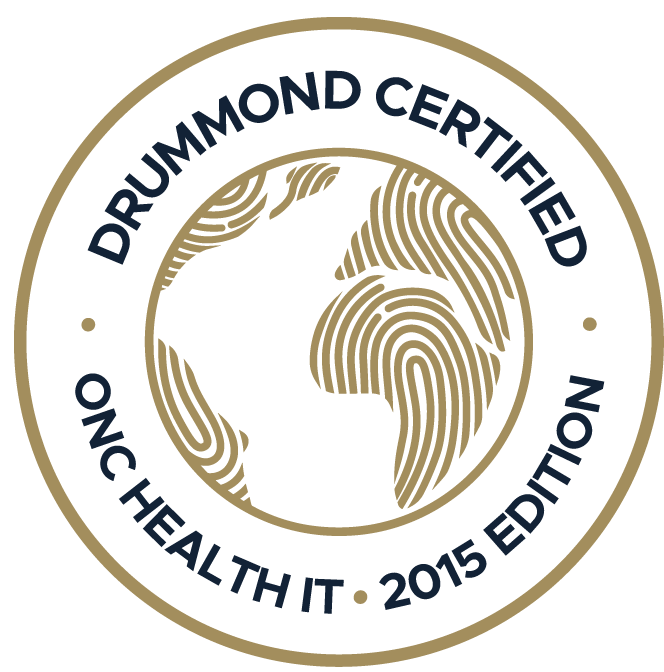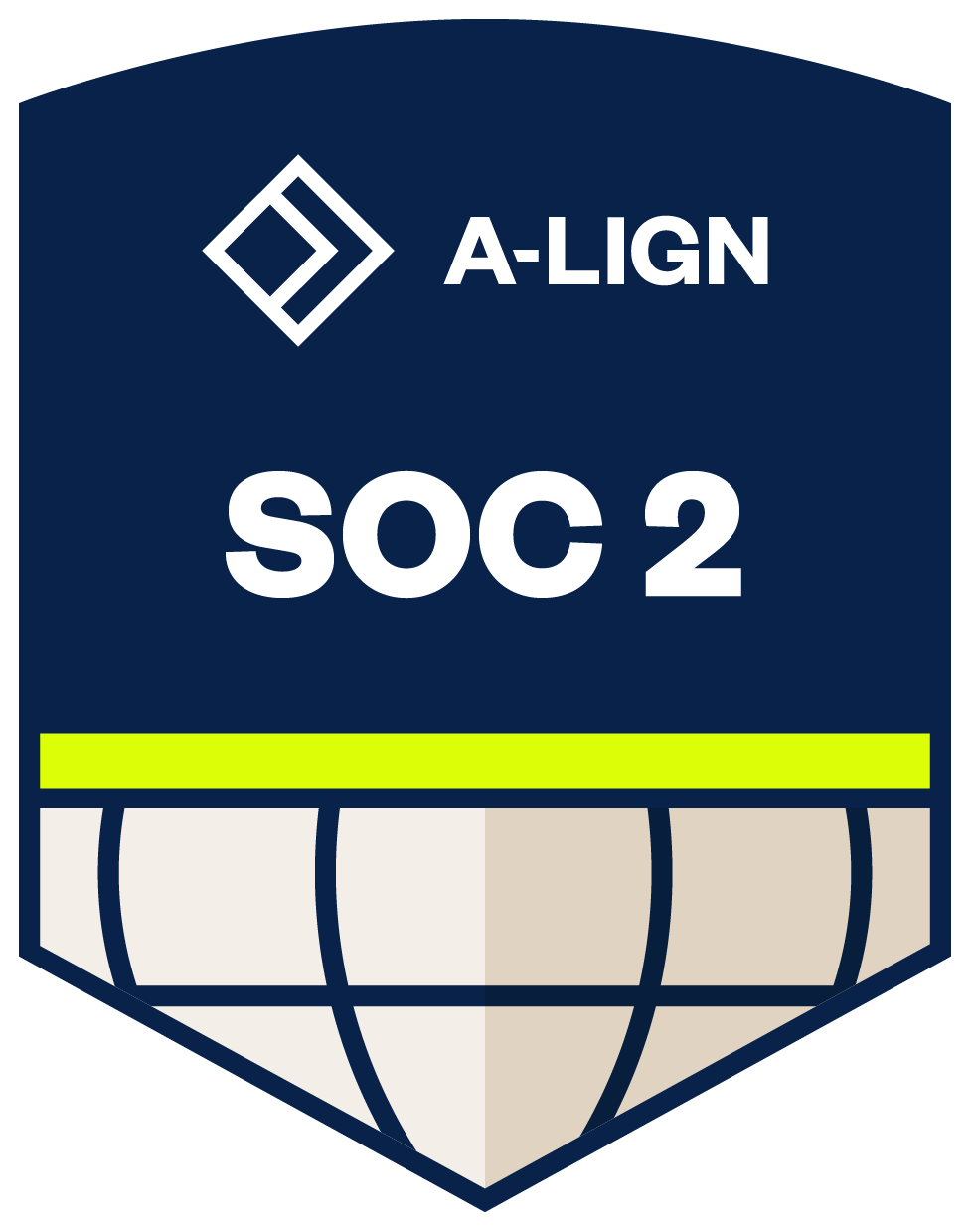Effective use of an EHR dashboard can boost your practice efficiency by up to 40%. While forward-thinking practices have already begun adopting single-point dashboards, many still limit their use to surface-level...
Nearly half of healthcare providers now pull out their phone or tablet during patient visits, not to scroll, but to document the visit. For those outside the clinic, this isn’t optional. It’s survival. Every note you finish during the visit is one less you’re doing in a car, at a café, or when you reach home after a hectic day.
But mobile charting still takes time. And time is exactly what traveling healthcare providers don’t have. Mobile AI scribes have proven to be a blessing for these clinicians. They record the visit as you go, turn it into organized notes in seconds, and let you keep moving without losing the details that matter.In this article, we’ll break down how mobile scribes help with portal documentation, why they’re a lifesaver for healthcare providers on the move, and what to look for when picking one for your clinic. Read on!
KEY TAKEAWAYS
- Mobile AI scribes help healthcare providers document visits anywhere (clinic, car, or home) without late-night charting.
- Mobile scribes are affordable, starting at just $329/provider/month compared to $3,500 for a human scribe.
- They save serious time, with some doctors earning back an hour a day and increasing patient face time by 56%.

The Real-Life Struggles of On-the-Go Documentation
For traveling doctors and home health workers, paperwork doesn’t stop when they leave the patient’s bedside. It just changes location. Sometimes it’s in the car between visits, at a coffee shop, or late at night when you’d rather be with family.
That’s the reality of portable documentation without the right tools. And it’s not just tiring. It’s eating away at patient time, focus, and your energy.
1. The Numbers Don’t Lie (Burnout, Lost Time, and Patient Impact)
The clerical load is heavier than most outsiders realize. A 2025 study found that smartphone-based ambient AI scribes can cut documentation time and after-hours work by up to 30%. That seems like a big win for healthcare providers on the move.
Moreover, patients notice the difference, too. A Permanente Medical Group study found:
- 84% physicians reported better patient interaction due to AI medical scribes.
- 47% patients noticed less screen time.
- 39% patients said their doctor was more focused on them.
When notes get done in the moment, you’re saving yourself from “pajama charting.” Most importantly, you’re giving your patients more eye contact, more listening, and more trust.
2. Why Traditional Documentation Tools Fall Short Outside the Clinic
If your EHR still ties you to a desk, you’re already at a disadvantage. Desktop-bound systems can’t keep up with the unpredictable, mobile nature of your work. They force you to delay charting, which increases the risk of missed details and rushed entries.
Without a mobile scribe or a healthcare app designed for on-the-go charting, every note becomes a memory test. You end up recalling vitals, interventions, and patient concerns hours later. For providers moving around, that’s stressful and risky.
The answer isn’t more hours in the day. It’s smarter small practice AI tools that can help you finish documentation before you leave the driveway. Mobile scribes are one such AI tool that’s seeing a rise in adoption among travelling doctors and home health workers.
What is a Mobile AI Scribe and How Does It Work?
A mobile AI scribe is like having a pocket-sized documentation partner you can take anywhere. It uses your phone, tablet, or other connected device to record a patient encounter (with consent), process what’s said using voice recognition for clinicians, and turn it into structured medical notes.
All this happens securely and in line with HIPAA compliance, so your patients’ privacy stays protected. Instead of spending your evening transcribing from memory, you can finish your chart right where you are with a mobile scribing tool. It might be at the bedside, in a patient’s living room, or between visits in your car. Here’s how mobile scribes work!
1. Document Patient Visits Anywhere (Phones, Tablets, and Beyond)
Traveling providers can’t be forced to sit in front of a desktop EHR. With a mobile healthcare app for documentation like Practice EHR’s AI Scribe, you can:
- Document at the bedside as the patient speaks.
- Capture notes mid-rounds at a nursing home.
- Finish charts from your car before heading to the next visit.
With this level of portable documentation, you can avoid dealing with piles of charts for “later” (which usually means after dinner).
2. Create Medical Notes With Accuracy Using Your Phone
Accuracy matters (especially when you’re moving fast). A May 2025 study comparing AI scribes and human scribes scored them at 4.20 vs. 4.25. The noted difference is practically negligible.
Thanks to advanced NLP and contextual understanding, mobile AI scribes need far less editing than older dictation tools. The system can now do more than just transcribe. The most advanced AI scribes, like Practice EHR’s AI Scribe , understand clinical context, which can help cut down on correction time and close encounters faster.
For on-the-go healthcare providers, that’s the difference between finishing on time and being stuck stressing over charts late at night.


What are the Benefits of Using Mobile Scribes?
If you’re wondering why more traveling doctors and home-health workers are switching to a mobile scribing tool, the answer is simple: more time with patients and less staring at a screen.
A good healthcare app with portable documentation tools can cut hours off your charting. That’s something that can make virtual visit documentation faster and more human. Using mobile scribes can benefit travelling healthcare providers in many ways!
1. More Time for Patient Care (Even When You’re Away)
Even if you’re not in your clinic, a mobile AI scribe can spare you time for patient care by taking manual documentation out of the equation. For example, while traveling, you can make a short stay at a restaurant for a quick virtual visit with a patient. You might not have time to document the visit manually. Luckily, with a mobile scribe, the process is automated.
It means that you can focus on the patient without writing a single word. This increases patient time. In fact, Practice EHR’s internal survey showed a 56% jump in patient-facing time with its mobile scribe.
2. Burnout Relief Without Breaking the Budget
For small practices, cost matters. A human scribe can cost around $3,500 a month. That might quickly become a budget problem for some small practices, with anywhere from one to four providers.
That’s why, for practices willing to cut costs, switching to a mobile scribing tool can be a smart move (both for portability and cost-effectiveness). For example, Practice EHR’s mobile AI scribe comes with a package that costs just $329 per provider per month.
3. Better Patient Connections
Every provider knows that constant screen time creates a barrier. A mobile scribe breaks that wall down. According to the Permanente Medical Group study, 39% of patients reported that their physician was more focused when using an AI scribe.
Thanks to portable documentation tools (like a mobile AI scribe), you can maintain eye contact, read nonverbal cues, and connect on a human level. Your notes are still accurate and complete, but they’re created in the background. Thus, you can stay engaged in the conversation instead of the chart.
4. Finish Notes On the Spot
One of the most underrated perks of using a mobile scribe is that you can close your charts before the visit ends. Mobile scribes use voice recognition so clinicians can process encounters in real time. That means your workday doesn’t follow you home.
This matters most for providers travelling around. Every note finished at the bedside is one less waiting for you at the end of a 12-hour shift. With a reliable mobile scribing tool, like Practice EHR’s AI Scribe, you reclaim control over your time.
5. Consistency and Accuracy Across Locations
When you’re documenting in different environments (a patient’s living room, a clinic, or even your parked car), consistency is key. Mobile scribes maintain formatting, structure, and compliance no matter where you work. The ultimate result is fewer edits and cleaner notes.
Studies show AI scribes perform nearly as well as human scribes, with negligible differences in accuracy (4.20 vs 4.25 scores). With that level of accuracy, your portable documentation is trustworthy (in addition to incredibly fast) across every setting.




Choosing the Right Mobile AI Scribe (Questions to Ask Before You Commit)
Choosing the right mobile AI scribe can be a bit tricky (despite how simple it seems). There are hundreds of “mobile scribes” in the market right now. Some look great in a demo but crumble in the field, where Wi-Fi drops, hands are full, and patients expect full attention.
Here are the most important questions to ask yourself before choosing the right mobile AI scribe that you won’t regret a month later!
1. Is It Really Designed for Mobility?
A “mobile-friendly” label isn’t enough. You need a true mobile-first scribe. That means it’s designed to work smoothly on your phone or tablet, whether you’re at a bedside, in a patient’s living room, or parked outside between home visits.
An EHR system that offers a mobile app (both Android and iOS) is a perfect pick. Bonus points for cross-device syncing, so you can start notes on your phone and finish them on your PC later. A mobile scribe that fits this description is Practice EHR’s AI Scribe.
With PracticeEHR Go (Practice EHR’s mobile healthcare app for Android and iOS), you get an AI scribe that can be used across multiple devices, including smartphones. Plus, it offers cross-device syncing, which makes it a truly mobile scribing tool.
2. Can It Adapt to Your Specialty and Role
Urgent care providers document differently from behavioral health specialists. And home-health nurses have very different workflows from ER doctors. Your mobile scribe should “speak” your specialty’s language.
Ask yourself, does the healthcare app offer customizable templates or specialty-specific note structures? If yes, that’s a good sign. EHR-integrated mobile AI scribes, like Practice EHR’s AI Scribe, offer customization for different specialties and various roles within a clinic.
3. How Secure and Compliant Is It?
Patient trust hinges on confidentiality. Make sure the mobile scribe you choose meets HIPAA standards, uses end-to-end encryption, and stores data in a secure, compliant environment.
Also, clarify where your data is stored. If you travel across state lines, you’ll want a tool that keeps everything compliant with regional regulations and doesn’t compromise patient privacy for convenience.
4. Is It Compatible With Your Existing Tools?
The right mobile scribing tool isn’t helpful if it forces you to use multiple healthcare apps or manually copy-paste notes. It should integrate directly with your EHR, so your charts are updated in sync without extra steps.
Ask your vendor if the mobile scribe supports bidirectional syncing. That’s the key to making sure your portable documentation and existing records stay consistent across devices and systems. Practice EHR comes with a built-in mobile AI scribe, which makes it the best choice for traveling doctors.
 Chart Anywhere, Anytime With Practice EHR’s Mobile AI Scribe
Chart Anywhere, Anytime With Practice EHR’s Mobile AI Scribe
You now have the chance to finish a home visit, close your chart on your phone, and walk out of the clinic or a patient’s home with nothing left to type later. That’s what a mobile scribe can do for you. It turns charting into something you can do anywhere, without compromising your personal time.
With Practice EHR’s mobile AI scribe, you can create accurate medical notes in seconds, anywhere on your phone or tablet. You’re now ready for any situation, from a quick urgent care visit to a long day of home calls. The Practice EHR AI Scribe keeps portable documentation fast, accurate, and stress-free.
End your day on time. Spend more of it looking at patients. Set yourself free from your PC. And finally, turn your mobile into your smart AI scribe and EHR assistant. Schedule a demo and see how easy it is to chart anywhere, anytime.
FAQs
A mobile AI scribe is a digital tool (usually inside a healthcare app) that listens to patient visits (with consent), transcribes the conversation using voice recognition for clinicians, and creates accurate medical notes that the doctor can review and sign from their phone or tablet.
A mobile scribe cuts down on typing by handling portable documentation. Many providers report finishing charts before leaving the patient’s home. Reportedly, this reduces after-hours work for doctors and nurses by up to 30%.
Yes, a mobile AI scribe can cost a fraction of a human scribe (around $329/month compared to $3,500/month), which makes it a cost-effective way to reduce burnout and increase patient time.
Topics: Patient Care, Small Practice, EHR Solution, Specialty-Specific EHR, digital age, HIPAA Security, Industry Update, Revenue Cycle Management, Medical Billing, Medical billing services, EHR, AI Scribing, AI EHR
RECENT POSTS



TOPICS
- EHR Solution (192)
- EHR (127)
- digital age (119)
- Patient Care (117)
- Medical Billing (112)
- Specialty-Specific EHR (112)
- Industry Update (98)
- Technology in Healthcare (84)
- EHR Features (79)
- Small Practice (78)
- Medical billing services (74)
- Integrated EHR (63)
- RCM (63)
- HIPAA Security (62)
- New Technology (44)
- Cloud-based EHR (43)
- Telemedicine (43)
- Healthcare Office Management (40)
- Practice EHR News (38)
- Kiosk (31)
- Revenue Cycle Management (28)
- AI Solutions (25)
- ePrescribing (21)
- AI Scribing (17)
- Best EHR Software (17)
- Practice Management Software (13)
- AI-powered Medical Billing (12)
- EMR (12)
- AI EHR (11)
- Practice Automation (11)
- TeleVisit (11)
- Client Favorites (10)
- The ONE (10)
- AI Scribe (9)
- Switching to New EHR (9)
- Best EHR Practice (8)
- EHR Integration (8)
- MACRA/MIPS (8)
- Patient Portal (8)
- Psychiatry EHR (8)
- Urgent Care (8)
- AI scanning (7)
- Automated Health Tools (6)
- E-Prescribing (6)
- Medical Practice Management Software (6)
- Product Updates (6)
- events (6)
- MIPS (5)
- Mobile EHR (5)
- Family Medicine EHR (4)
- HIPAA (4)
- Insider (4)
- Integrated Practice Management (4)
- Internal Medicine EHR (4)
- MIPS Reporting (4)
- Multilingual AI Scribe (4)
- Orthopedics EHR (4)
- Podiatry (4)
- Podiatry EHR (4)
- Regulatory Updates (4)
- Telehealth Platform (4)
- Telehealth Platforms (4)
- Chiropractic EHR (3)
- Digital Experiences (3)
- EHR Flaws (3)
- EHR Implementation (3)
- EHR for Chiropractors (3)
- EHR for Small Practices (3)
- Eligibility Verification in Medical Billing (3)
- Medical Coding Services (3)
- Patient Check-in Kiosk (3)
- PracticeEHR GO App (3)
- Automated EHR (2)
- Cash Flow (2)
- Cashless Payments (2)
- Clearinghouse (2)
- Dermatology EHR (2)
- EHR Scheduling (2)
- Family Medicine (2)
- Foot and Ankle Care (2)
- Foot and Ankle EHR (2)
- Health records 101 (2)
- Healthcare Compliance Certification (2)
- Medical Billing Partner (2)
- Medical Credentialing (2)
- Pediatrics EHR (2)
- Quality of Patient Care (2)
- Reporting Under MIPS (2)
- Risk and Liability in Medical Settings (2)
- Voice-Activated AI Scribe (2)
- What Works Clearinghouse (2)
- ACA Subsidy (1)
- AI Scan (1)
- AI Scribe for Pediatric Care (1)
- Bariatric EHR (1)
- Behavioral Health Practices (1)
- Billing Communication (1)
- Billing for Private Practices (1)
- Cardiology EHR (1)
- Charting (1)
- Data Security (1)
- Dos and Don'ts (1)
- EHR Dashboard (1)
- EHR Guides (1)
- EHR KPIs (1)
- EHR Questions to Ask (1)
- EHR Transition (1)
- EHR for Chronic Illness (1)
- EMR vs EHR Difference (1)
- ENT EHR (1)
- Endocrinology EHR (1)
- Gastroenterology (1)
- Gastroenterology EHR (1)
- General Surgery EHR (1)
- Geriatric AI scribe (1)
- Geriatrics EHR (1)
- Guides (1)
- Healthcare Practice Office Management (1)
- Help Center Videos (1)
- Insurance Reimbursement (1)
- KPI (1)
- Key Performance Indicators (1)
- Lab Processing (1)
- MACRA (1)
- Nephrology EHR (1)
- Neurology EHR (1)
- Pain Management EHR (1)
- Patient Behavior (1)
- Pediatric Care (1)
- Physical Therapy EHR (1)
- Practice Cash Flow (1)
- Practice Efficiency (1)
- Pulmonology EHR (1)
- Reconsider Your EHR (1)
- Simplify Practice Management (1)
- Staffing in Healthcare (1)
- Switch Medical Billing Providers (1)
- Urgent Care Medical Billing (1)
- Urology EHR (1)
- insurance claim denials (1)










